The engine’s combustion process generates a lot of heat which, if not cooled, causes overheating. And that makes the engine stop. To start the engine, one has to identify the cause of overheating and fix it.
So, Honda Civic overheated and now won’t start? Why and how to fix it? The engine overheats due to possible coolant leakage, a damaged thermostat, or a faulty radiator. It may also overheat due to low engine oil levels, a defective head gasket, or a water pump. To fix these problems, repair or replace the damaged parts with appropriate OEM spare parts.
This article reviews the leading causes of Honda civic engine overheating and how to fix it. In addition, it also addresses the symptoms of an overheating Honda civic.
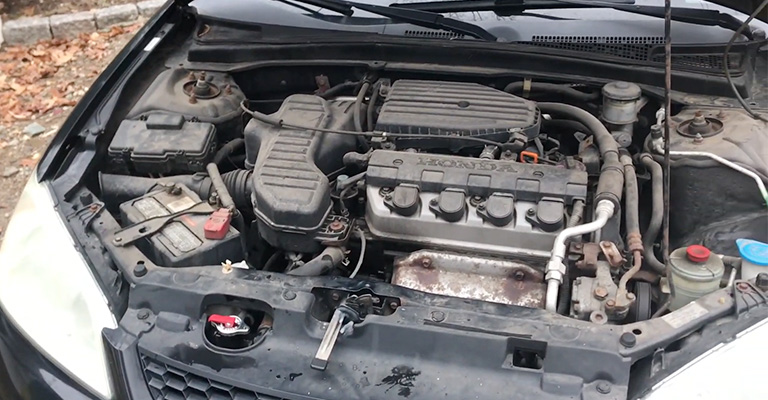
Causes Of Honda Civic Overheating And Solutions: Quick Overview
The leading causes of an overheating Honda civic rotate around the cooling system and the engine. With us is a list of the common causes and possible solutions for an overheating Honda civic.
| Causes Of Honda Civic Overheating Problems | Solutions |
| Coolant leak | Repair leaking points |
| Replace the coolant reservoir | |
| Damaged thermostat | Inspect and replace the thermostat if blown-out |
| Faulty head gasket | Replace the worn-out and blown gaskets |
| Faulty radiator | Replace the damaged radiator |
| Clean and unclog the radiator | |
| Replace the radiator cap with a new one | |
| Clogged coolant hose | Clean the coolants system |
| Replace the damaged hoses | |
| Damaged water pump | Inspect and repair the damaged parts or replace the water pump |
| Low engine oil capacity | Top up with the right engine oil |
My Honda Civic Overheated And Now Won’t Start: Why And How To Fix?
Let’s look at why your engine is overheating and now won’t start and the possible tips on fixing the problem. You can DIY some problems in the garage, while other issues will require you to consult a mechanic about repairing and replacing.
Coolant Leak And Clogged Coolant Hose
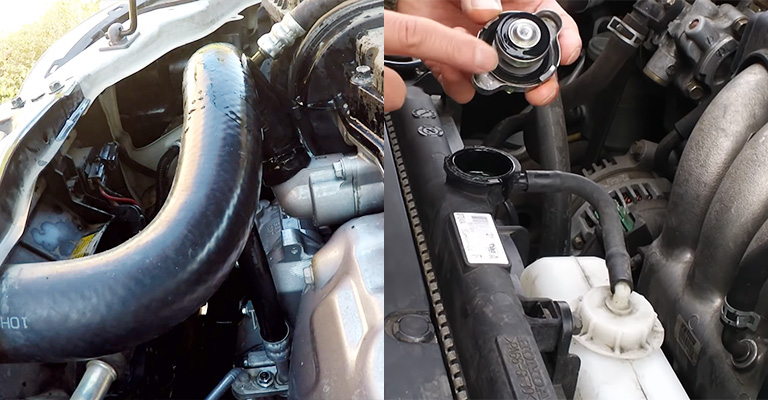
The cooling system helps reduce the high engine’s temperature by flowing the coolant through the machine. If any of the cooling systems’ components are damaged, the coolant leaks affect the system’s cooling capacity.
Thus, the system may have clogged hoses that hinder the smooth flow of the coolant. The resultant impact is less cooling capacity hence the engine overheats. An overheating engine stops and won’t start. One has to fix the problem to have the vehicle back on the road.
How To Fix?
Clean the clogged hose and add antifreeze agents to improve the coolant’s efficiency. For small leaks, seal with strong adhesives and sealants. Replace the damaged parts with the correct OEM spare parts.
Faulty Head Gasket
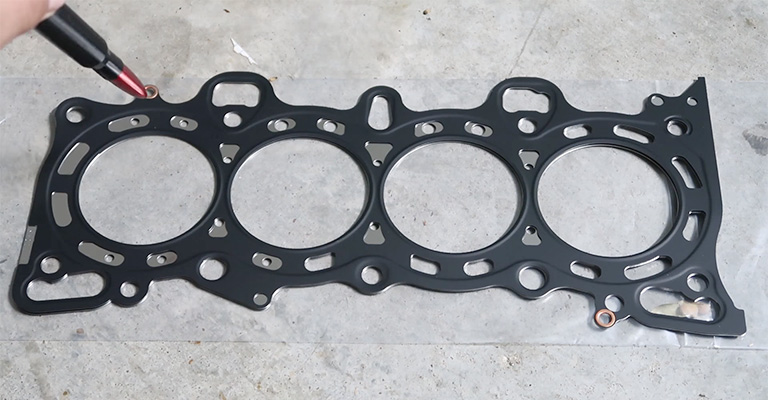
Head gaskets in the engine keep the engine fluids from leaking and mixing. A blown or worn-out gasket leads to the potential mixing of engine oil and coolants. Such contamination leads to insufficient cooling of the engine.
Once the engine overheats, it stops working and can cause damage to other engine parts if not fixed.
How To Fix?
The head gaskets are designed for one-time usage. Therefore, replace any blown or worn-out gasket with new ones. Ensure to get an exact high-quality part that will fit in the two marrying parts.
Damaged Thermostat
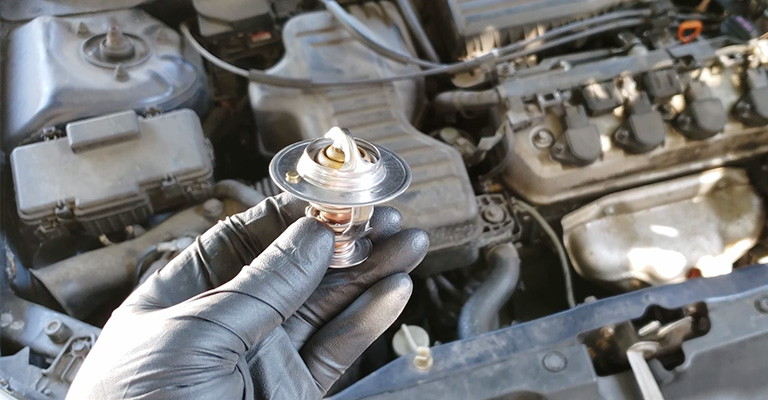
Thermostats are devices that control the engine’s temperature and trigger specific actions to maintain the temperature at a standard level.
Once damaged, the engine overheats, and no action is triggered to cool it. Thermostats often get smudged by the sealant making it hard to sense temperature changes.
Such occurrences cause the antifreeze to boil from the high temperatures and steam through the radiator cap.
How To Fix?
Thermostats cannot be repaired. Therefore, replace it with a high-quality spare that can resist damage from high temperatures. Also, ensure the thermostat is well-sealed and protected from sealants and fluids.
Faulty Radiator And Water Pump
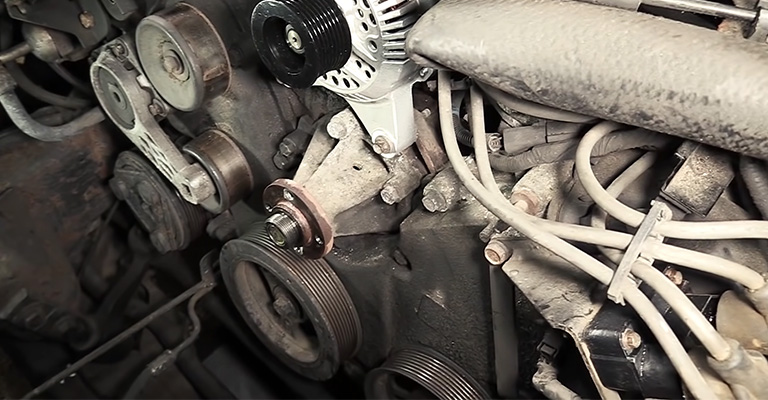
The radiator and the water pump form part of the cooling system. Slight damages to these parts lead to a faulty cooling system.
Likewise, the radiator facilitates the transfer of heat from the hot coolant and then cycles it back when cooled to re-cool the engine. So a faulty radiator keeps the coolant hot; hence, the engine remains hot and causes overheating.
On the other hand, the water pump propels the coolant around the engine for cooling. If it’s faulty, the engine overheats as the coolants are not circulating.
How To Fix?
For a faulty radiator, replace the broken fans and cap and clean the blocked hoses. Repair the leaking points in the system to prevent coolant wastage. Have the water pump impeller vanes and the bumper shaft repaired or replaced?
Low Engine Oil Capacity
The engine oil is used to lubricate the engine parts and to cool the engine during the combustion process. With continuous usage, the oil gets used and reduces in level and thickness. Hence affecting its efficiency.
Failure to top up the oil will lead to engine overheating as the friction on the rotating shafts and moving pistons increases.
How To Fix?
Change the engine oil according to the given engine timelines in the manual. You can also change engine oil after the standard 1,000 miles or after six months.
Likewise, ensure you repair any leakage points in the oil reservoir. Replace the engine oil with the recommended oil for your specific Honda civic engine.
Common Symptoms Of Honda Civic Engine Overheating
Earlier detection of Honda civic overheating problems can help save damage to other engine parts. To detect these problems, below are the common signs and symptoms to check.
Red Temperature Gauge
On the dashboard, there is a temperature gauge that indicates the temperature readings. At average temperatures, the gauge ranges on the black part. Once the engine overheats, the indicator hits the red mark on top, indicating an abnormal rise in the temperature.
If you notice the gauge sticks close to the red mark, have the engine checked before damaging other engine parts.
Steam From The Hood
Steam from the hood is a clear indication of an overheating engine. The steam is a result of the boiling antifreeze in the coolant. Once you notice the slightest steam from the hood, stop the vehicle and allow the engine to cool. Replenish the coolant before starting the engine.
Burning Odor
An overheating engine will have a burning smell of the engine components. The engine is made of parts with different materials that burn or melt at certain degrees. In case you smell the odor of burning parts, stop and inspect the engine for signs of overheating.
Low Engine Performance
For the Honda civic engine to perform optimally, it has to be at the right temperature. The engine may be overheating if you suspect power loss while driving at high speed.
You can quickly notice that stepping on the acceleration pads yields no much power as expected. By then, most of the above symptoms will be on display. Inspect the engine and fix the overheating problem.
Temperature Light On
The temperature light should remain off, indicating no alarm for high temperature. However, if you see the light turn on while driving, be quick to inspect the engine for possible overheating problems.
Please switch off the engine and allow it time to cool down before hitting the road again. Replenish the water and coolant in the reservoir. Check the oil level and adjust accordingly.
FAQs
Here are some of the frequently asked questions-
Q: Is It Dangerous To Drive A Honda Civic With Overheating Problems?
Yes. Driving an overheating Honda Civic is dangerous for the driver and the vehicle. It can cause damage to other engine components that will lead to an expensive repair. On extreme levels, the engine can warp or burst into flames leading to loss of lives.
Q: For How Long Can I Drive An Overheating Honda Civic?
You can drive it for a short distance after allowing it to cool as you seek mechanic assistance. However, it is always advisable to let the engine cool before starting the engine again.
Q: At What Temperatures Does Honda Civic Engine Start Overheating?
Honda civic engine operates at an average of 200F maximum temperatures. Any temperature beyond 200F is considered above the normal, and the engine is overheating.
Conclusion
So, having a Honda Civic overheated, and now won’t start? Why and how to fix it? You got the answer in this article. Overall, the heat from the combustion process in the engine is too much and needs to be regulated to avoid engine overheating.
Failure of the cooling system or part of it affects its cooling capacity leading to engine overheating. An overheated engine will stop working and needs to be fixed before starting again. Inspect the cooling system components for any damage or leak and fix them accordingly. Otherwise, replace it if needed.

Leave a Reply